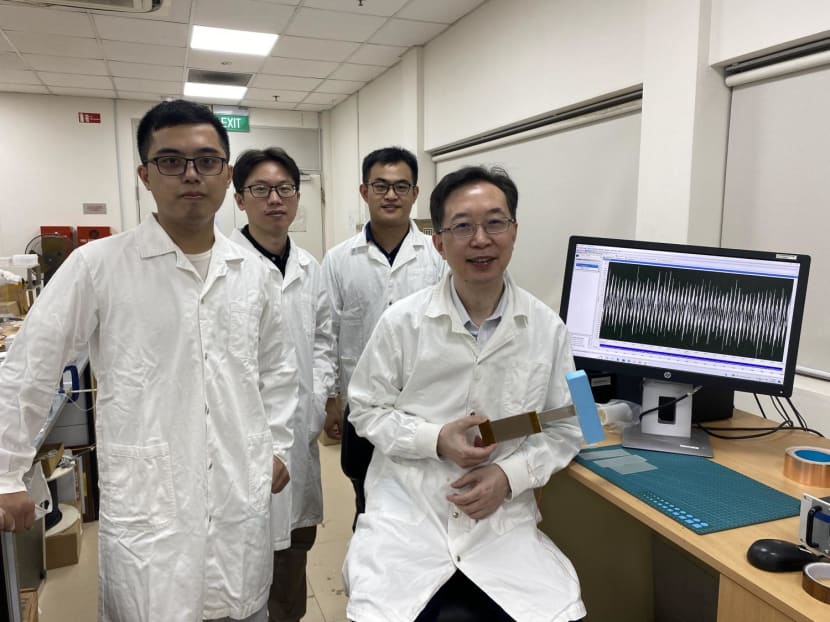Can light breezes be turned into electricity? S'pore scientists building 'wind harvester' to do that
SINGAPORE — Scientists from Nanyang Technological University (NTU) have developed a wind harvester that can convert the light breezes experienced in Singapore into stored electricity.

(L-R) The team from NTU’s School of Civil and Environmental Engineering: PhD student Liu Zicheng, research fellow Hu Guobiao, research associate Zhao Chaoyang and associate chair Professor Yang Yaowen, holding the wind harvester.
- Scientists from Nanyang Technological University (NTU) have developed a small-scale wind harvester
- It can generate an electric current from light breezes, which makes it a good match for urban environments that experience lighter winds
- The device is a sustainable substitute for lithium batteries currently used to power devices like sensors and LEDs
- The team behind the wind harvester plans to commercialise it within two years
SINGAPORE — Scientists from Nanyang Technological University (NTU) have developed a wind harvester that can convert the light breezes experienced in Singapore into stored electricity.
This harvester is unlike large wind turbines, which can produce large amounts of energy for the power grid, and which people mainly associate with wind-generated energy.
Instead, the wind harvester that the NTU scientists have developed harvests wind energy on a much smaller scale and for more targeted functions.
The wind harvester uses a simple system in which vibrations, caused by the movement of its body in the wind, create charges on an attached film. An electrical current is then created as the charges flow from an aluminium foil to a copper film.
The device can produce three volts and generate up to 290 microwatts of electricity from exposure to winds with a velocity as low as two meters per second. This is enough to power a commercial sensor and send data to devices like a mobile phone or a computer.
Its ability to create energy from lower wind speeds makes the device attractive for use in urban areas that see slower wind speeds on a day-to-day basis.
On top of that, the harvester has the ability to store unused power within itself to continue powering whatever device it is connected to for an extended period of time in the absence of wind.
The main focus of the team, led by Professor Yang Yaowen, a structural engineer from NTU’s School of Civil and Environmental Engineering (CEE), was to develop a sustainable small-scale power source.
“Our research aims to tackle the lack of a small-scale energy harvester for more targeted functions, such as to power smaller sensors and electronic devices. The device we developed …is self-sufficient and would only require occasional maintenance, and does not use heavy metals, which if not disposed of properly, could cause environmental problems.”
The wind harvester could also serve as a potential alternative to lithium-ion batteries, the scientists said.
The wind harvester, which the team has spent about 10 years researching and developing, is also cheap, costing less than S$10 to produce as it is made of inexpensive materials such as copper and aluminium foil.
The team behind the device plans on commercialising the device for use as a more sustainable option to power devices like structural health monitoring sensors and light emitting diode (LED) lights, which the industry currently uses lithium batteries to run.
The team noted that many devices in the growing Internet of Things space require sensors, and the scientists hope that their harvester would be a sustainable alternative power source for devices which require such sensors.
At the current stage of development, the harvester is still a prototype that can only generate enough energy to power sensors and electronic devices, but the team intends to conduct further research to improve energy storage and output power, and is aiming to go commercial by 2024 or 2025.
As of now, there are no plans for consumer use yet, but there has been interest from industry players regarding the technology, the team said.






